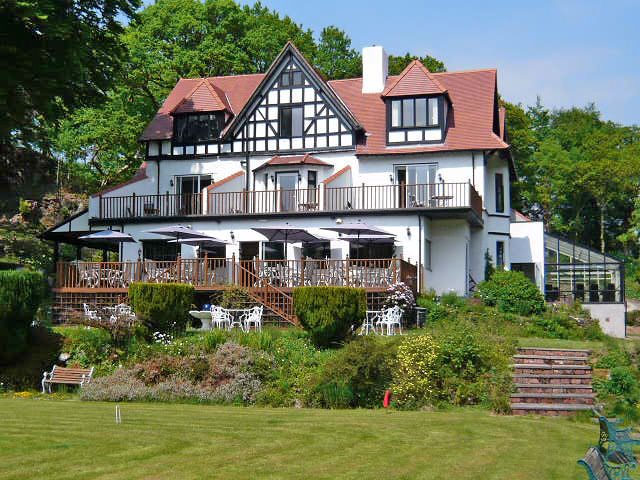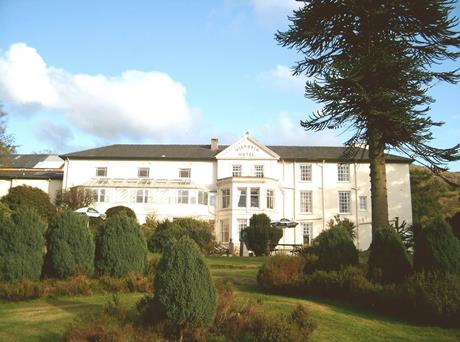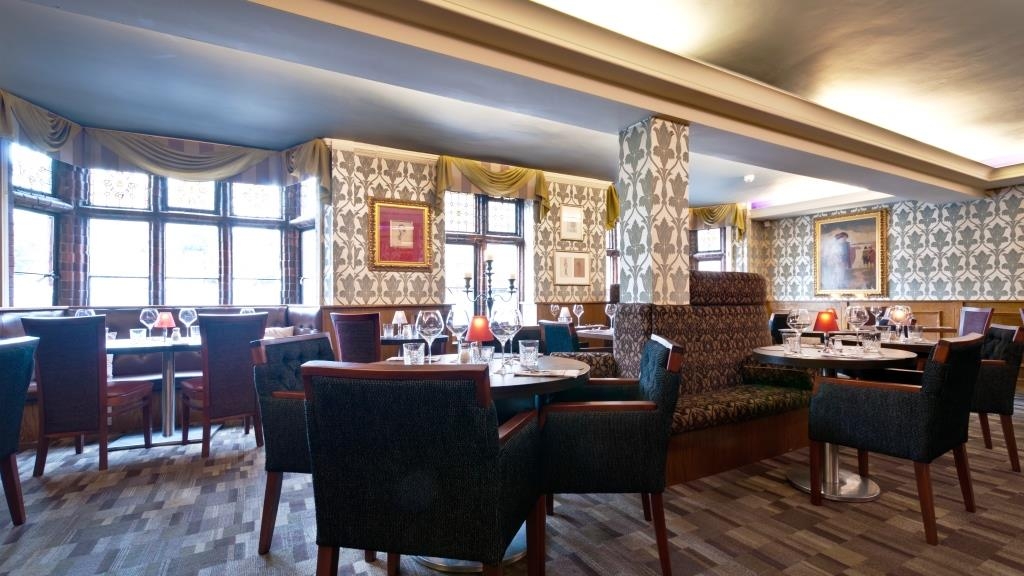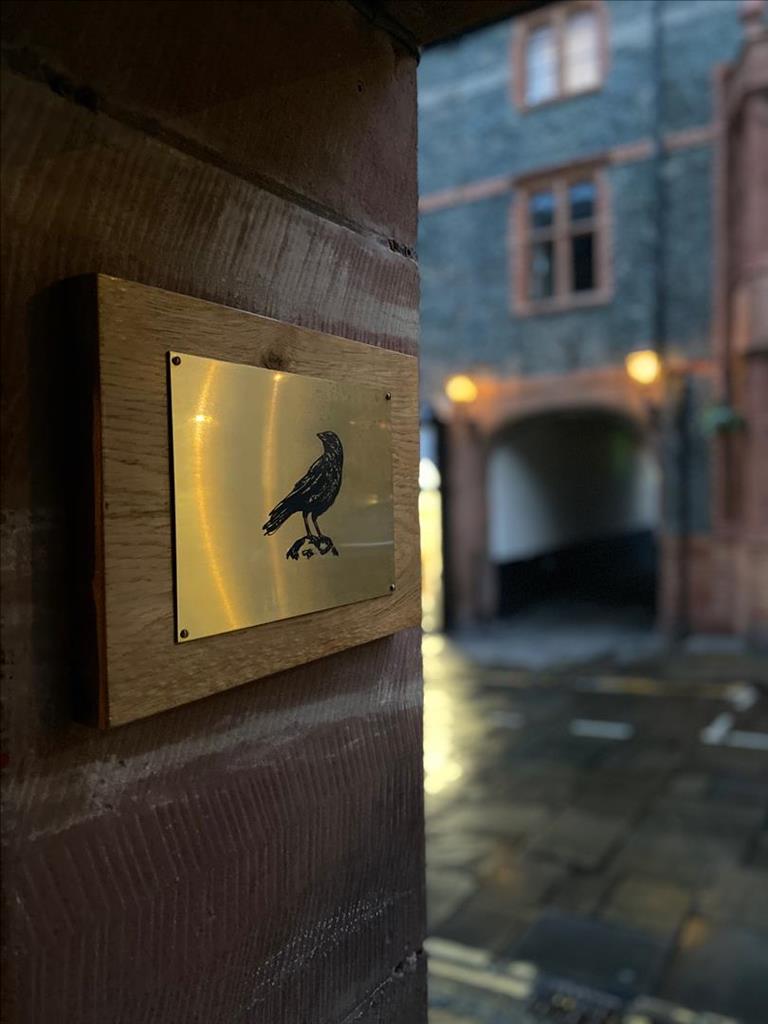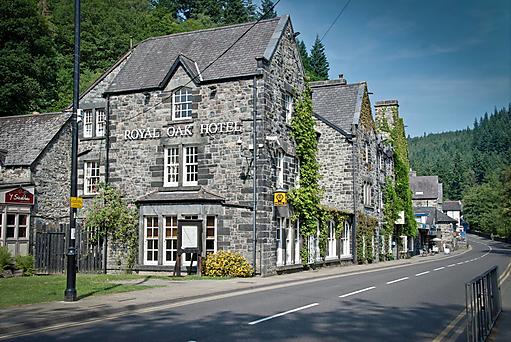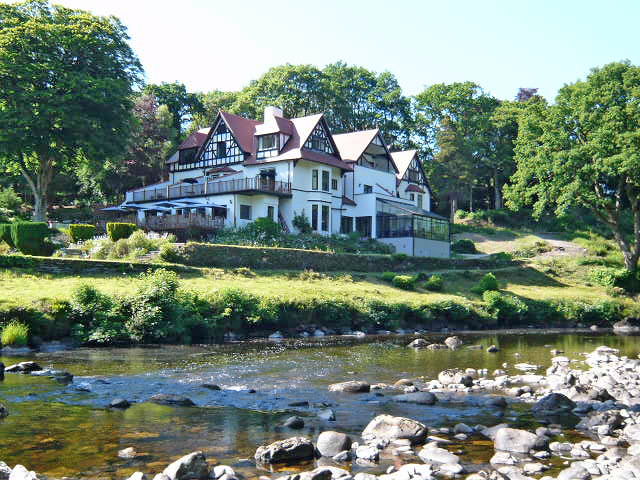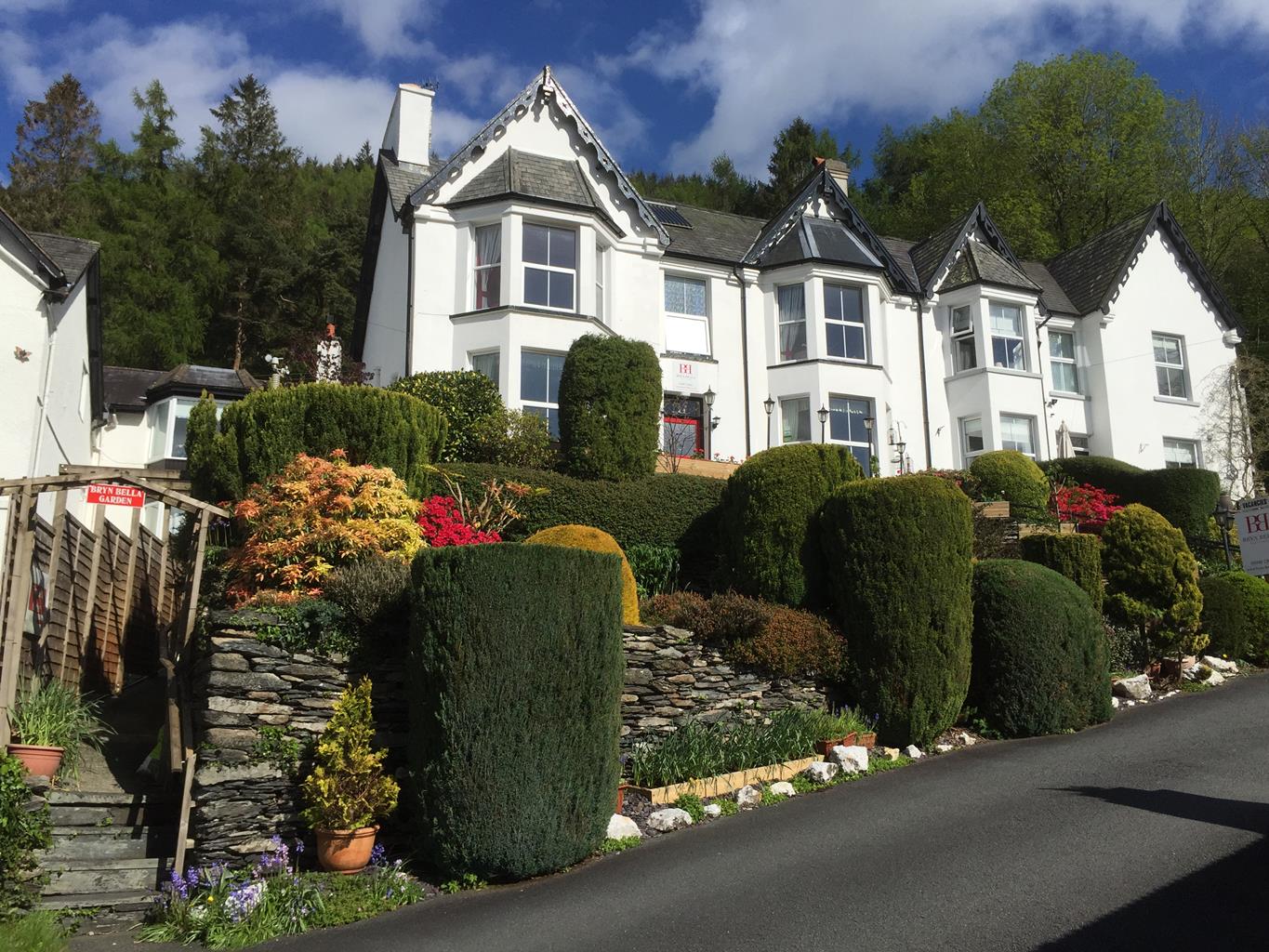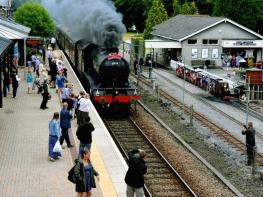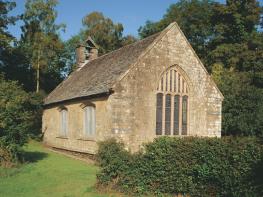Centrally situated in the village, the Royal Oak is an elegant, privately owned hotel that…
Climbing Moel Siabod

An ascent from Pont Cyfyng of Moel Siabod, the highest of the Moelwynion peaks
6.5 miles (10.5kms)
About the walk
The highest of the Moelwynion peaks, Moel Siabod offers exceptional views of the even higher summits to the north and west. On a clear day, 13 of the 14 3,000ft (914.4m) peaks in Wales can be seen at a glance. The view of Snowdon is as good as you’ll get, for you can see the whole of the Horseshoe and all the major peaks. Glyder Fach’s bristly rocks and Tryfan’s distinctive buttresses add spice to the view across Nant Gwryd, while the rolling Carneddau fill the northern horizon. There are several possible routes to the top of this splendid mountain. The walk has the most interesting ascent, from the A5 at Pont-Cyfyng. On the way up, you’ll pass the eerie quarrymen’s barracks at the former Rhos Quarry, where slate was cut out of the mountainside until the early 1950s.
There are a number of Welsh legends concerning a type of water demon or lake monster known as an afanc. One such story concerns Llyn y Foel, a lake directly below the rocky slopes of Moel Siabod, and the etymology of its alternative name, Llyn Llygad yr Ych (‘Lake of the Ox’s Eye’). The afanc in question is believed to have lived originally in a pool on the River Conwy near Betws-y-Coed. All attempts to kill the creature having failed, it was decided to use a local girl as bait to entice it from the pool. They would then capture it and use a pair of oxen to drag the animal to a new home in Glaslyn, a mountain tarn high up on Snowdon. To begin with, all went well. The afanc was captured, attached to the oxen, and led away on the long journey to Glaslyn. The monster was extremely heavy, however, and continued to struggle ferociously. On the high mountain pass below Moel Siabod, one of the oxen strained so much that an eye popped out, its tears forming a lake. In honour of the ox, the lake was christened Llyn Llygad yr Ych (‘Lake of the Ox’s Eye’). Fortunately, the rest of the journey was free of incident. On arriving at Glaslyn, the afanc is said to have jumped into the lake, where it has remained to this day.
Walk directions
From the car park, cross the main road and turn right along the pavement. Pass Cyfyng Falls and take the next lane on the left over an old stone bridge (Pont-Cyfyng). Walk up the lane to a track marked ‘Private Road’ and signed to Moel Siabod.
Climb steeply to a sharp right-hand bend, where you join a signed footpath diversion continuing ahead. Rejoin the main track above a house and continue across stark, low moors, with the cone of Moel Siabod rising ahead. The increasingly rough track keeps to the left of a rocky spur thrown out by the mountain.
After traversing rough, peaty slopes, the path passes to the right of a pleasant unnamed lake to reach the derelict Moel Siabod Slate Quarry. Beyond the old workers’ barracks, it passes to the left of a deep, black quarry pool and climbs more peaty slopes to look down on Llyn y Foel, under the rocky slopes of Siabod.
The footpath becomes intermittent as it struggles with the marshy ground to the west of the tarn, but soon reaches terra firma on Siabod’s southeast spur. Don’t attempt to turn up the rocky spur too soon, but don’t overshoot the right turn up to the summit either – the path ahead eventually loses itself on the mountain’s southern slopes.
The path to the top provides an exhilarating climb, weaving up easy rock. You should eventually emerge by a cairn, just south of the summit. Follow a fence to the right and cross a makeshift stile formed by stone slabs. The summit (marked by a trig point) is a short distance beyond.
Initially, the route down follows the mountain’s northeastern spur. Ignore the rocky ridge top, but stay just to the left of it on the short grass. You will eventually pick up a faint path raking northeast down the left side of the spur. The path becomes more prominent as you descend towards Plas y Brenin.
Ignore a stile at the top of a fence, but cross the next two stiles and continue down to heathland, then into forest. Take a right fork, and when a forestry track crosses turn right and descend gently. Maintain direction until the main track swings left. Bear right here onto a smaller track, which soon narrows to a path running close to the Afon Llugwy.
Ignore a footbridge crossing to the Gwesty Cobdens Hotel, instead turning sharply right and following the banks of the Llugwy. After leaving the woods, the path continues through fields to meet a track below a house. Bear left uphill to return to Pont-Cyfyng and retrace your steps down the main road to the Bryn-Glo car park.
Additional information
High mountain paths, poorly defined on top section of ascent, many stiles
Mountain cwms and tarns, oak woodland in valley
Can run free in woods; sheep around in summer on mountain
OS Explorer OL17 Snowdon / Yr Wyddfa
Bryn-Glo car park near Pont-Cyfyng
None on route
This is a tough mountain walk on unclear paths – best left for a day of clear visibility
WALKING IN SAFETY
Read our tips to look after yourself and the environment when following this walk.
Find out more
Also in the area
About the area
Discover Conwy
The majority of the population of Conwy lives along its picturesque coastline, while a third of the county falls within jaw-dropping landscape of the Snowdonia National Park. The town of Conwy, which takes its name from the county (which in turn was named after the river that runs through it), is undoubtedly one of the great treasures of Wales.
Three fine bridges – Thomas Telford’s magnificent suspension bridge of 1822, Robert Stephenson’s tubular railway bridge, and a newer crossing – all stretch over the estuary beneath the castle, allowing both road and the railway into this medieval World Heritage Site. Pride of place goes to the castle, dating back to 1287.
Conwy is the most complete walled town in Britain, with walls measuring an impressive six feet in thickness and 35 feet in height. The walkway along the top offers splendid over-the-rooftop views of the castle, the estuary and the rocky knolls of nearby village of Deganwy. At the wall’s end, steps descend to the quayside where fishermen sort their nets and squawking seagulls steal scraps.
Nearby stays
Restaurants and Pubs
Nearby experiences
Recommended things to do
Why choose Rated Trips?
Your trusted guide to rated places across the UK
The best coverage
Discover more than 15,000 professionally rated places to stay, eat and visit from across the UK and Ireland.
Quality assured
Choose a place to stay safe in the knowledge that it has been expertly assessed by trained assessors.
Plan your next trip
Search by location or the type of place you're visiting to find your next ideal holiday experience.
Travel inspiration
Read our articles, city guides and recommended things to do for inspiration. We're here to help you explore the UK.

